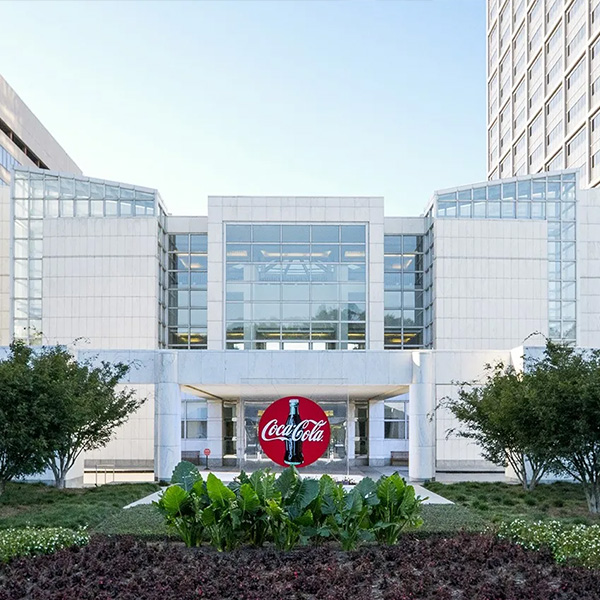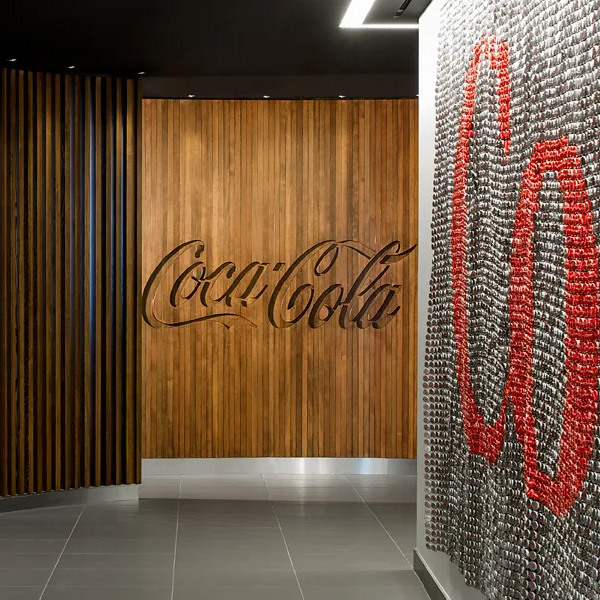Quality & Food Safety Policy
2021
The Coca‑Cola Company (TCCC) and our bottling partners work tirelessly every day to manufacture and deliver products of the highest quality and safety to our customers and consumers. Quality & food safety are foundational to our company and are embedded in our purpose to refresh the world and make a difference.
Vision
Our vision is to craft the brands and choice of drinks that people love, to refresh them in body and spirit while doing so in a manner that ensures that every product is a product they can trust for both quality and safety. It is a trust that must be maintained, enhanced and continue to be earned every day, with 1.9 billion servings a day.
Every associate across our enterprise is responsible for ensuring quality and food safety and in delivering on that brand trust. Whether they work directly in our manufacturing operations, or as part of the delivery and merchandising of our products at the point of purchase – or indirectly in enabling services such as finance, HR, legal, IT, or public affairs – every person plays an important role in “keeping the promise” with our consumers. This means that they receive the “perfect product, trusted everywhere” every time. Nothing less than 100% quality and safety is acceptable.
Guiding Principles
We will conduct our business in ways that will ensure the safety of our products and quality in everything that we do. This includes working with select suppliers and business partners that have a strong commitment to the required processes, capabilities, culture, leadership, and routines needed to deliver safe, quality products.
To drive toward this ambition, we will adhere to applicable legal and TCCC requirements relating to quality & food safety everywhere we do business. In addition, our quality and food safety efforts include the following:
- Quality by Design
- Ensuring that as part of the development and commercialization of every product that both quality and food safety are intrinsically integrated into the design, manufacturing and delivery of that product.
- Included is the verification of the quality, efficacy and integrity of all ingredients, intermediates, packaging, product contact materials and final products through science-based review and decision making protocols and routines.
- Supplier Management
- Purchasing of ingredients, materials and equipment used in the manufacture and distribution of company products from company-authorized suppliers, and ensuring the ingredients and materials meet specifications prior to use.
- Manufacturing
- Manufacturing intermediate and final products of the company in authorized facilities, and producing, storing, handling and distributing them in accordance with approved processes and procedures.
- Managing and controlling conditions that impact quality and food safety outcomes using the following foundational programs and principles:
- Good Manufacturing Practices
- Hazard Analysis Critical Control Points (HACCP)
- Process Assessment, Validation & Verification
- Distribution and Marketplace
- Storing, handling, distributing, dispensing, vending, and merchandising ingredients, intermediate products, and finished products in a manner that assures their quality and safety.
Quality & Food Safety Governance & Stewardship
The Coca‑Cola Operating Requirements (KORE) define the policies, standards and requirements for managing our quality & food safety responsibilities across our operations. In addition to requiring compliance with applicable legal requirements, KORE requires that our manufacturing facilities implement FSSC 22000 (internationally recognized standard for food safety) that ensures the provision of resources to achieve the organization’s food safety objectives, together with the fostering of continual improvement in food safety performance.
To guide us in working to achieve a safe, quality product, KORE also defines a rigorous set of operational controls to manage known risks. These controls generally align with top global requirements and consensus standards. They include the following, keeping in mind that the required scope and details of each element below should be consistent with the risks and circumstances of individual operations:
Risk Assessment and Management
- Identify, evaluate, and proactively address quality and food safety risks and emerging trends.
- Use regular, periodic, and objective assessments to ensure compliance with applicable company and legal requirements.
Leadership Commitment
- Establish visible leadership commitment to quality & food safety performance and improvement through:
- Integration of quality & food safety into business plans, results, performance reviews and other business routines.
- Regular and visible leadership involvement in quality & food safety communications and improvement activities, including annual updates of the organization’s health & safety performance goals and objectives.
Engaged & Capable Employees
- Provide clearly defined roles and responsibilities, training, communication systems and participation opportunities to promote effective engagement from employees at all levels.
Embedding Quality & Food Safety Culture
- Promote a positive quality & food safety culture through active engagement at all levels of the organization, including system leaders, employees, networks, and councils. Enabling this culture also requires the following:
- Establishing processes that regularly evaluate and reinforce quality processes, and ensure that effective controls are in place.
- Ensuring employees are encouraged, supported, and empowered to participate in the design and development of quality processes and routines.
- Capturing employee feedback to identify strengths and weaknesses of each program and take appropriate action.
- Implementing processes to ensure quality and food safety trends are identified and analyzed with effective action plans established.
Objectives and Performance Tracking
- Establish and track the organization’s quality and food safety performance goals and objectives.
- Regularly report on our ESG priorities and progress through annual reporting such as our Business & Environmental, Governance and Social Report.
Stakeholder Engagement
- Collaborate, as appropriate, with internal and external stakeholders through communication and sharing of lessons learned and successful practices to leverage the organization’s ability to achieve the highest level of consumer satisfaction.



